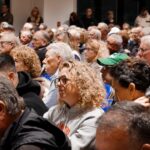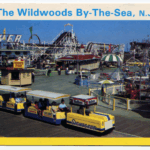Eventually every community and condominium association will face a major renovation, rehabilitation or replacement project.
These projects such as elevator modernization, roof replacement or interior common area renovations involve replacement of common elements. They are for the most part relatively straightforward and predictable and are usually included in capital reserve studies. The Association’s capital reserve study identifies estimated timeframes and budgets for major projects.
The budget for these projects may be substantial but the long-range forecasting component included in capital reserve studies allows associations time to accumulate cash reserves so funding is available when time comes to perform these projects. If the association has not set aside adequate cash reserves, owners should recognize that an assessment is needed to pay for these projects. In most cases there are no major surprises.
But in some instances, an association faces an expensive extra-ordinary renovation, rehabilitation or replacement project with little or no advance notice. Examples of such projects include rehabilitation of deteriorated structural components, replacement of corroded plumbing or fire suppression system piping, replacement of exterior window wall systems and even bulkhead replacement. These extra-ordinary projects are usually not included in a capital reserve study and do not get the attention of the Board until serious problems are evident. By the time the Board is aware of a problem the asset has been compromised, is not functioning as designed or has reached the end of its useful service life and requires replacement or rehabilitation to restore the asset to like-new condition. These projects must be planned and executed in a relatively short period of time to prevent further damage and to restore the asset back into service. Perhaps measures can be taken to slow the rate of further deterioration but these are usually short-term fixes. Ultimately and inevitably a major project is necessary. While the timeframe for planning and execution is compressed, the steps to perform a major project successfully are the same whether the project is planned or unplanned.
A board arrives at the realization that a major project is needed because of recurring maintenance issues such as extended downtime for elevators, visible rusting and corrosion on concrete balconies or frequent unexpected leaks. Repetitive unbudgeted repairs cause inconvenience, aggravation and Association cash shortfalls. In worst case, failing to diagnose or address deferred maintenance may result in the failure of structural components and essential building systems. Age, moisture and lack of maintenance are the root causes of most problems at the shore.
How does an Association Board manage a major project, whether planned for and budgeted or unplanned and unfunded? The Board investigates to confirm the extent of the problem, identify the cause of the problem, and determine the most appropriate action to fix the problem and address the issues that caused the problem. The Board should rely on its engineer to perform a condition assessment to identify the causes and complexity of the issues and problems and make recommendations for what is ultimately necessary to fix the problem and achieve the desired results.
Often a Board will be made aware of a problem by a service contractor such as a property maintenance mechanic, an elevator technician, plumber, electrician or even a painter. Developing good working relationships with service contractors for essential equipment provides intangible value to most Associations. However, a Board should not act solely based on information provided by a service contractor. It’s expected that your elevator service technician will alert you to routine wear and tear. But when the technician suggests expensive repairs, replacement of structural components or major upgrades to equipment, the Board may want to retain an independent consultant before spending significant funds on repairs or upgrades.
Most Board members do not understand elevator operation nor how to measure and gauge elevator performance. An independent elevator consultant working for the Association will perform an assessment of elevator condition and performance, ensure that the elevator maintenance service meets contract requirements and advise the Board regarding what if any upgrades are required by code.
Moisture infiltration damage is common for seashore associations. Identifying the source and cause of moisture infiltration is not always easy. Recurring moisture infiltration is frustrating for condo unit owners and the Board. Evidence of leaks under windows, on ceilings and along floor lines are signs of moisture
infiltration. Often sealant failure is the cause and is relatively easy to identify and replace failed sealants. Water stains or soft drywall may be a sign of long-term moisture infiltration into a building’s exterior wall systems. Water infiltration into the structural framing of exterior balcony decks can often be identified by leaks from below. Moisture infiltration causes damage to sheathing and rots the fasteners holding the sheathing to the framing or supporting beams for decks and is a prevalent situation many condo boards face here at the seashore. Because moisture infiltration damage is unseen and not included in capital reserve studies, condo boards often don’t plan for such major repair projects. In these situations, the Board would be best served by hiring an experienced engineer to perform periodic inspections of exterior facades, balconies and decks.
Depending on the scale, scope and estimated project cost, a Board may want a detailed report to verify the findings or recommendations from a preliminary report. A detailed report is invasive in nature to substantiate findings from an initial non-invasive report. A condo board fulfills its fiduciary duty by following the advice of its professionals, more so when dealing with complex and extra-ordinary matters. It is not unusual for a Board member to disagree with the general consensus or the repair approach, believing that a less comprehensive and ultimately a less costly repair is adequate. Boards must be cautious if discounting the professional opinion of a qualified and experienced engineer because one Board member arbitrarily disagrees. Simply stated: when you don’t know what you don’t know, hire a professional and don’t shoot the messenger if you don’t like the message.
Jim Yost owns Elite Management and Advisory Services, LLC and is Managing Partner of Ocean Property Management Corporation, based in Wildwood NJ. His firms manage over 30 homeowner associations and condominiums in southern New Jersey, including several high rise and mid-rise oceanfront condominium buildings. He can be reached at yostopmc@comcast.net
Karim Kaspar, Esq. is Senior Counsel with Lowenstein Sandler LLP. He serves as general counsel to numerous community and condominium associations throughout New Jersey. He specializes in complex commercial litigation and real estate matters and has been active and instrumental in the firm’s pro-bono activities. He can be reached at kkaspar@lowenstein.com.







